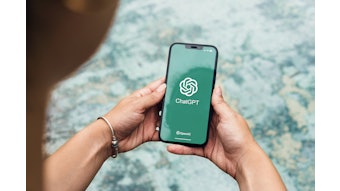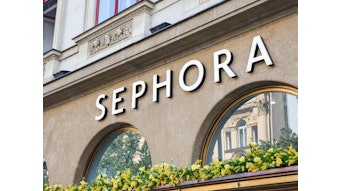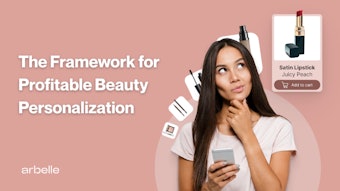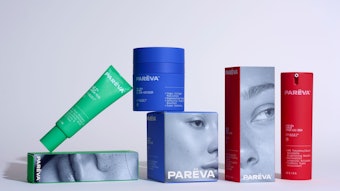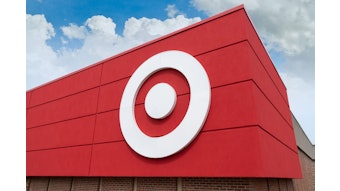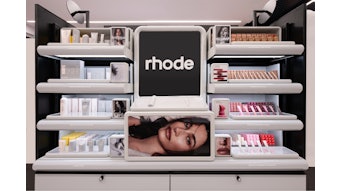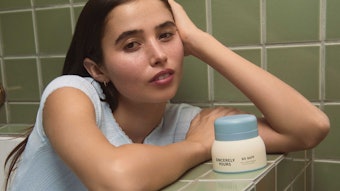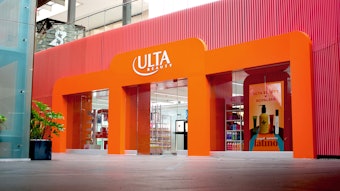
This past September, when Mary Dillon, CEO of Ulta, spoke at a CEW event in New Yorka, she could not have been more eloquent in her description of what builds the cosmetics business today: that brands and retailers cannot garner much-needed awareness or engagement without one key ingredient—people.
Today, the people can have as much or more power to make a brand than a multimillion-dollar ad campaign. Consumers have the capacity to communicate what they like to the world and, within seconds, have that message spread globally.
Omnichannel marketing is a careful orchestration of digital marketing, social sharing and in-store experience that has to be carefully integrated.
In this environment, small brands can become big brands simply because of the time spent giving personal attention and specialization to market segments via digital marketing. As a result, the power of marketing now rests both with consumers and brands, which means stores are no longer the sole gatekeepers of customer engagement.
In the past, the prestige segment was the only category known for developing unique messaging and personal shopping experiences for customers. This has changed, in part because of approaches like Mary Dillon’s at Ulta—giving personal attention to customers from people who enjoy what they do, making for an enjoyable shopping experience. Sephora has also been successful by handpicking their cast members to offer a similarly pleasant shopping experience.
Yet, every enjoyable and productive brick and mortar shopping experience must be supplemented with the power of digital marketing, social media and, in some cases, direct sampling.
Omni Isn’t Easy
I have discussed the evolution of the traditional brick and mortar business in this series of articlesb, but haven’t dealt with the strategy that is all the buzz today—omnichannel marketing.
Omnichannel marketing is a careful orchestration of digital marketing, social sharing and in-store experience that has to be carefully integrated. It may seem simple to execute, but it is not. It used to be a cost-effective model, but omnichannel is becoming as costly as traditional marketing, and may even become more expensive because of the many available options.
The use of influencers is one of the single most important drivers of brand credibility, though they are no longer cheap, costing upwards of $20,000-$50,000 per month.
Furthermore, the omnichannel is not limited to retail as the endpoint for the consumer purchase. There are also successful strategies with direct sales through home shopping and multilevel marketing, as well as direct-response TV. And let’s not forget the beauty box customer touchpoints, including those of IPSY, Birchbox and Glossybox.
The integrated delivery strategy of digital marketing and social sharing is the new consumer reality, but is more complicated than simply adding social media and/or e-commerce to brick and mortar, because the power of a brand is not the physical store but the people working there—peers.
Peer Influence
Peer and influencer opportunities that can garner attention and credibility for a brand include grass roots activities such as consumer trade shows, and fashion week and vlogger/blogger events. The use of influencers is one of the single most important drivers of brand credibility, though they are no longer cheap, costing upwards of $20,000-$50,000 per month.
Cutting-edge beauty chains such as Ulta and Sephora are heavily engaged in orchestrating the customer engagement from smart phone to store.
For example, when I was at NYX, Toni Ko created a white pencil that was intended to be an under-eye pencil. She bought about 10,000 units and thought it would last for several months. When the pencil was put on the NYX website, influencers immediately jumped on it and found other uses for it. As a result, the pencils sold out in days, not months, and this SKU became a hero product overnight for NYX.
Consumer Engagement
Selecting social media platforms can be a moving target. Several years ago, it was all about Facebook, which today is irrelevant for millennials compared to the key platform of Instagram. And I doubt there is any CPG marketer who is not putting some funds into Snapchat, which has become the latest mecca for these consumers.
Social media selection and resource allocation is only one element of the strategy, however. It alone will not give your customer the shopping experience they’re looking for. To succeed, retailers and brands need to integrate social media at the point of sale to address the 85% of millennial consumers who have done their homework before they arrive at the store.
ven department stores are rethinking the ROI on beauty advisers and fragrance specialists, as are the brands, which foot the bill for these expensive selling tools.
Cutting-edge beauty chains such as Ulta and Sephora are heavily engaged in orchestrating the customer engagement from smart phone to store. Ulta is currently testing beacon technology, which sends out digital invitations customized to the consumer. In 2015, Sephora began using beacons in stores nationwide to deliver timely, personalized alerts—including birthday greetings, loyalty program updates, training notifications and more—to consumers who opted-in.
This is not something that the brands can spend a lot of time on, unless the retailers ask them to participate in a promotion. If you, as a brand leader or marketer, are invited to participate in a beacon program, I strongly recommend that you consider doing so, because this well-integrated system completes the customer experience.
Point of Sale Considerations
Training at the point of sale is crucial because many specialty retailers—like Sephora and Ulta—utilize selling specialists. Brands need to think of the point of sale as well.
For example, if you’re in the mass space, where many customers have been primed by digital marketing, how do you consummate sales? There, strong messaging that brings attention to your latest and greatest products, is critical.
When Leslie Blodgett went on the air in 1997 with no experience on TV, she created a new category called mineral makeup, which was known by only a small segment of consumers.
The same goes for prestige, because there are not always dedicated beauty advisors available in specialty retail. Even department stores are rethinking the ROI on beauty advisers and fragrance specialists, as are the brands, which foot the bill for these expensive selling tools.
Shop at Home: A Brand-maker
The home shopping channel is an interesting segment for beauty. Today, 100 million homes get the three major home shopping channels, with QVC being the largest and most productive in terms of sales per minute, followed by Evine and HSN. By my own estimation, I believe the beauty piece of home shopping is just slightly south of $1 billion at retail.
But how do the peers and influencers make this segment work? Just ask brands that were literally languishing before they got on QVC. Bare Escentuals wasn’t getting any significant traction, selling under $100 million prior to QVC. When Leslie Blodgett went on the air in 1997 with no experience on TV, she created a new category called mineral makeup, which was known by only a small segment of consumers.c
Blodgett got into the kitchens and dens of women watching QVC and became their best friend; the customer thanked her by buying her brand. QVC did not “make” Bare Escentuals, but the channel helped make it the top-selling brand in beauty for many years.
The secret to home shopping, as well as direct-response TV (DRTV), is a great story with a product that has demonstrable befores and afters.
In 1998, Smashbox was on its last legs and close to bankruptcy; according to co-founder Dean Factor, the banks were close to locking the doors. Then QVC happened, and the brand had a new lease on life, eventually being acquired by Estee Lauder in 2010.
Both Smashbox and Bare Escentuals were floundering until QVC brought the magic, and both later sold for high prices due to the power and resonance of people and influencers. In 2010, this model was repeated when IT Cosmetics, then a two-year-old brand, was brought to life by QVC, raising the business up to sales of hundreds of millions virtually overnightd.
Jamie Kern Lima, founder of IT Cosmetics, has spoken extensively about how she built this line out of her apartment with a strong problem-solution strategy, which has been so successful that L’Oréal decided to add the brand to its portfolio, paying $1.2 billion based on 2015 sales of $300 million.
What it Takes to Succeed in Home Shopping
Is home shopping, in itself, a driver of brand awareness and sales? No. In fact, over the last several years the cosmetic business has been under pressure in this channel of distribution. Success requires innovation in the brand and, most importantly, a credible storyteller with a demonstrable point of difference.
The mechanics of home shopping are not easy. It can take six months or more (as occurred with IT Cosmetics) to get on air because there are many hoops to jump through—proving financial promise, providing samples, communicating benefits and point of difference, etc.
This does not mean home shopping is an easy business once you get on-air. The secret to home shopping, as well as direct-response TV (DRTV), is a great story with a product that has demonstrable befores and afters. For these reasons, Proactiv has been the most valuable brand in home shopping, DRTV and direct vending machines.
No one has the time to listen to a 15-minute show, much less a one-hour program.
As a brand grows and is given more home shopping airtime, the volume can increase dramatically. In addition, home shopping channels set a minimum hurdle of sales per minute.
The sales hurdles vary among channels; QVC requires about $15,000 per minute in sales, while HSN requires $5,000, though most are in the $10,000-$12,000 range. If you come close to the minimum, a channel may continue to work with you, but will redo the messaging and, perhaps, put you on non-primetime spots.
The challenge is significant, but the payoff can be big—as many brands have shown—representing by far the most cost-effective sales execution and branding opportunity.
Home shopping can bringing incremental revenue to a brand that is selling at retail.
Recently, QVC announced that it is creating a fully dedicated channel just for beauty called Beauty iQ. It is clear that this will offer more airtime to expand the current beauty portfolio.
Although TV shopping has been stumbling for a while, the power of video in converting customers to buy is strong, so perhaps QVC will utilize this new channel to drive other platforms to engage the customer.
In any case, it demonstrates QVC's commitment to this well-established retail segment and, perhaps, is putting some new life in to it.
Complex Paths to Purchase
QVC, HSN and Evine understand the need to broaden their reach beyond TV. All are actively developing campaigns on smart phones and reach-out events in the cosmetic and fashion industries to build more connections and find new ways to communicate and touch the customer at as many points as possible.
The reality is that, today, no one has the time to listen to a 15-minute show, much less a one-hour program. Most of the audience gets introduced to brands by watching just a portion of a show or segment. Later, the customers circle back online to make the purchase.
Unlike home shopping, which is a niche business dominated by three companies, the plethora of cable channels makes the cost to air DRTV spots extremely reasonable, while production of a long- or short-form show can be very affordable.
Online sales represent a small segment for the home shopping segment but, when a show is aired, it drives significant awareness and website traffic for the channel, brands and even other retailers carrying that brand.
The latter phenomenon occurs because, many times, the customer may want to touch and feel the products, which isn’t yet possible through a screen. As a result, home shopping can bringing incremental revenue to a brand that is selling at retail. The size of the retail bump depends on how compelling the show is.
DRTV’s Rapid ROI
DRTV, in which consumers respond directly to the brand by phone or online, continues to get a message across quicker than any retailer and can be tweaked many times until it successfully drives purchases. Guthy Renker reigns supreme in this channel, selling close to $1 billion dollars of Proactiv acne products annually in 10–20 countries.
However, this is a marketing option open to all brands, including startups. Unlike home shopping, which is a niche business dominated by three companies, the plethora of cable channels makes the cost to air DRTV spots extremely reasonable, while production of a long- or short-form show can be very affordable.
The big cost today is in driving people to your brand.
Like e-commerce, there is an immediate ROI that can be measured quickly. In fact, DRTV can be used effectively alongside e-commerce, driving consumers from a brief infomercial to a website for more information.
Continuity makes beauty an important asset to home shopping and profitable for e-commerce and DRTV. This is particularly true in the skin care category and, sometimes, in color cosmetics. If a brand like Proactiv has continuity, the customer lifetime value proposition is financially attractive. In its early years, Proactiv’s reorder rate was five times. That meant that a one-time investment in DRTV airtime was repaid by a customer making five total purchases.
Today, that reorder rate has dropped, but it remains an amazing vehicle for many cosmetic concepts—if they have a low cost of goods and, as I mentioned, demonstrable befores and afters.
E-commerce Levels the Playing Field
E-commerce is the modern version of DRTV. It is even cheaper and can be more targeted but, unlike in its early years, the channel does not come cheap. Despite rising costs, there is no brand that I know of that does not have its own e-commerce site that is either operating on its own or via a third party.
Next to home shopping, e-commerce can be one of the most profitable channels of distribution. As I have discussed in the past, e-commerce and digital marketing are a must-have because, today, the rest of the channels cascade from these key marketing toolse.
Whether you are a startup or in the process of gaining traction, e-commerce provides one of the best barometers of how your brand is doing and can be an effective tool for testing different marketing strategies. However, e-commerce is no longer cheap; the largest brands are spending millions to drive eyeballs to their sites.
Amazon, one of the best e-commerce companies, is global and at the forefront of technology due to its sheer size.
The setting up of a website is relatively easy—any high school student can do it, and any good graphics person can create some inviting images to give your brand personality. The big cost today is in driving people to your brand. Google has amazing free analytics tools for measuring your traffic and engagement, and there are other services that can provide even more personalized detail catered to your needs.
Whether you do it yourself or outsource it, having a brand builder to create excitement is a must. This is part art, because there are lots of options, and part science, because there is lots of data available for tracking your progress.
Sites like HauteLook and Gilt can also be great for inexpensively building brand awareness.
The cost of hiring a social media and SEO team to manage your marketing and branding can run into the tens of thousands of dollars per month, but it is essential. You need to find a way to do it nimbly—I know firsthand that it can be done with limited budgets.
The secret is to establish some key performance indicators to track your investments and gauge which strategy is giving the best return. Retailers like Ulta and Sephora have huge departments focused on this, as do the big companies such as Estée Lauder and L’Oréal. But the beauty of digital marketing is that every brand has potentially the same chance to get the consumer’s attention.
Amazon: Beauty Giant
Amazon, one of the best e-commerce companies, is global and at the forefront of technology due to its sheer sizef. The retailer’s rankings and analytics are incredible and, better yet, it handles thousands of beauty brands and is always on the lookout for more.
Amazon is not for everyone, but the advantage for small startup brands is that the retailer’s door is always open for you and can generate lots of global awareness. Sites like HauteLook and Gilt can also be great for inexpensively building brand awareness.
People may think that in order to start a direct sales business you need huge sums of money. The answer is no.
The thing to just keep in mind is that, as great as all e-commerce sites are, they typically only augment a larger marketing program that might include retail, home shopping, DRTV, etc.
The main issue for beauty e-commerce is that you still need the human element. Women still like to touch and feel products and experience personal contact, so as great as digital and home shopping can be, it doesn’t provide the complete experience.
The New Direct Selling Model
Direct sales is almost as old as retail. The earliest direct-selling beauty company that I know of is Avon, which began in 1886 and currently has sales of about $6.2 billion (2015). There is also Mary Kay, which was founded in 1963 and achieved 2015 revenue of $4 billion. Some direct marketers have brick and mortar, like Merle Norman, a declining brand that was founded in 1931, while others are using the power of social sharing to create modern-day Tupperware-style parties.
In the early days of direct sales, companies found reps, who may have used a Tupperware-style party plan, and generated sales via catalogs. These strategies have evolved with the internet and social media. The successful newcomers that have embraced this early on have watched their sales skyrocket, while the old guards stuck in the past are struggling with an aging representative network and obsolete catalogs.
Companies like NYX and e.l.f., which jumped on the influencer bandwagon early on, are reaping the benefits today.
People may think that in order to start a direct sales business you need huge sums of money. The answer is no. Mary Kay started in 1963 with $5,000 which, adjusted for inflation, is about $40,000 today. You may believe that there are too many big direct sales companies out there and wonder how you could compete.
The reality is that there are several billion-dollar direct-selling companies and, as mentioned, some are being challenged to understand the new world order. Others have shot out of the gate and, in a couple of years, amassed hundreds of thousands of representatives at the expense of the old guard. Today, there are many multilevel marketing and direct sales companies with annual sales of more than $1 billion, as well as many small organizations doing hundreds of thousands of dollars in sales.
Telephone, Telegraph, Tell a Woman
Direct sales is evolving, but still powerful because of the power of personal selling. Before the internet and social influencers, Estée Lauder knew the power of women and what they could do—her marketing mantra was: “Telephone, telegraph, tell a woman.” That sums up the capacity of people and explains why, no matter what medium comes next for the cosmetics industry, it will somehow involve a woman.
Companies like NYX and e.l.f., which jumped on the influencer bandwagon early on, are reaping the benefits today. Today, the influencer component is the secret to bringing direct beauty sales to life. There are direct sales companies with 500,000-plus reps in the United States, while others have just a few hundred. The key is to be sensitive to the evolution of social selling and how to harness this power.
Retail pillars such as Macy’s, Nordstrom’s, CVS and Target will need to reinvent themselves to catch this new wave of personal interaction and engagement.
Younique is one of the most amazing direct sales multilevel brands to emerge in a long time. The company markets makeup and has been in business for just four years, growing rapidly from a small organization based in Lehi, Utah, to a major player in the United States and Europe, with annual sales exceeding $500 million.
Melanie Huscroft and her brother, Derek Maxfield, an entrepreneur in e-commerce and software, developed this brand. Many brands in multilevel marketing have tried to incorporate digital marketing and social sharing into their business models. But none have been as focused on building their rep network as Younique. Today, the company has more than 500,000 reps around the world. What’s their secret?
As mentioned earlier, the Tupperware party is now being done virtually, empowering millennials to leverage their network to discuss makeup and build their own businesses. These new digital networkers are taking the power of people to the next level, sharing and selling globally.
The Race for Engagement
While social influencers are still important, it is the creative orchestration of a number of customer touchpoints that will ultimately create a climate of personal connection to the customer. Many of today’s successful brands, including IT Cosmetics and Younique, are not selling well because they are marketed at an attractive price point or a strong point of difference, but rather because of the personal touch they deliver.
Retail pillars such as Macy’s, Nordstrom’s, CVS and Target will need to reinvent themselves to catch this new wave of personal interaction and engagement. They should hurry, because Sephora and Ulta are already there, mounting a strong campaign to build personal relationships with customers and their peers.
Jeffrey Ronald Ten (jefften@att.net) brings more than 35 years of international senior management marketing and sales experience from the prestige, mass, direct sales, travel retail cosmetic industry. Ten has held roles with Nature’s Sunshine, NYX, Calvin Klein Beauty, Procter & Gamble (Prestige Division), Giorgio Beverly Hills, Estee Lauder, Elizabeth Arden and others. Currently, he is CEO/general manager of Note Professional Cosmetics, a start-up/independent makeup brand that launched in the professional channel at Cosmoprof Las Vegas in 2016
Footnotes:
aSee "Meet Ulta’s Beauty Enthusiasts"
b“The Beauty Startup Guide to Retail Survival” (April 2016) and “The Case for Mass Vs. Class” (September 2016); www.gcimagazine.com/magazine/pastissues/2016/
cAccording to a 2012 profile of Blodgett, her first appearance on QVC sold out her entire $45,000 worth of inventory and ultimately sold at a rate of $1.4 million of products per hour; www.forbes.com/sites/85broads/2012/01/24/taking-an-exit-but-not-saying-good-bye/
dJamie Kern Lima, founder of IT Cosmetics, has noted that the brand’s first 10-minute spot took place following a two-year process of engaging QVC, proving there is no truly overnight success; www.entrepreneur.com/article/237379.
e“The Case for Mass Vs Class,” September 2016; www.gcimagazine.com/magazine/pastissues/2016
fAccording to research from L2 (www.l2inc.com), Amazon owns beauty search results. And, according to BloomReach (bloomreach.com) research conducted by Survata, 55% of all U.S. consumers turn to Amazon first when searching for products. Notably, Amazon increased its search share by 11% since 2015. In addition, about 90% of consumers surveyed will check Amazon even if they find a product on another site; 78% noted that this occurred frequently or every time.
